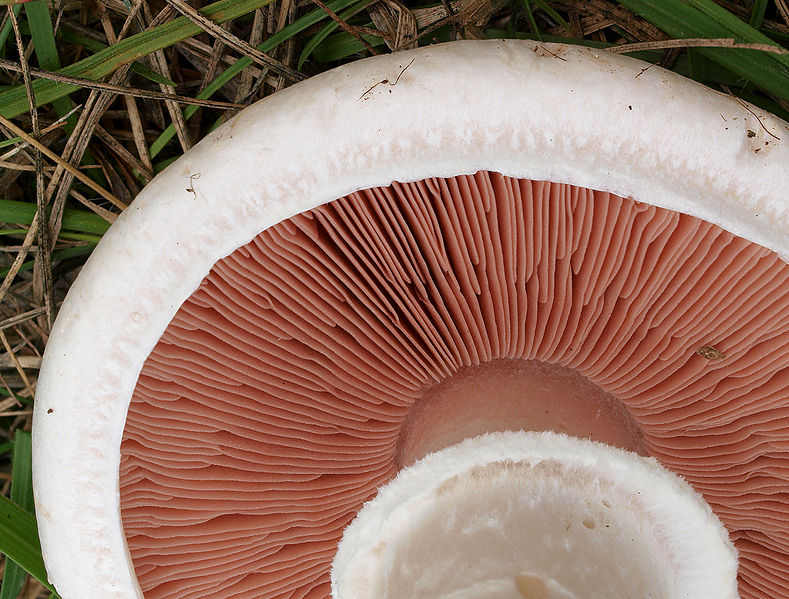Meadow Mushroom Identification – Agaricus campestris
Heads up
When you’re wandering through a field after a refreshing rainfall or just walking across a well-maintained lawn, you might stumble across a common but delightful find: the Meadow Mushroom, scientifically known as Agaricus campestris.
This mushroom loves grassy spots and fields. After a good rain during the later part of summer or even later. They might pop up alone, in small groups, or even in circles called fairy rings. If you’re in a city suburb, you can still spot them in parks or lawns.
In the past, when horses were commonly used for transportation, these mushrooms would often pop up in large numbers in pastures. This was because of the natural fertilizers the horses left behind. Today, with fewer horses around, these large appearances of Meadow Mushrooms have become less common.
Meadow Mushroom: Key Parts in Photos



How to identify Meadow Mushroom
The mushroom’s cap is white and might have some fine scales on it. It’s typically between 1-5 inches in diameter. When it’s young, the cap looks like a little dome (hemispherical), but as it grows up, it flattens out. Now, flip the mushroom cap over, and you’ll see the gills. These start off pink. As they mature, they change to a red-brown and eventually a dark brown.
The stalk, or what scientists call the “stipe”, holds up the cap. It’s white, between 1-4 inches tall. You’ll find a thin ring around it, and if you break the mushroom’s flesh, you might notice it turns a reddish-brown color. But be careful: there’s a poisonous look-alike called Agaricus xanthodermus that turns yellow when bruised.
The Meadow Mushroom’s spores are dark brown, thick-walled, and elliptical. Also, if you’re looking at the parts of the mushroom, you might hear the term “hymenium”. This refers to the part of the mushroom where the spores are produced, typically on the gills. For the Meadow Mushroom, the hymenium is free, meaning it doesn’t attach directly to the stalk.
Want to learn more?

Disclosure: This post includes affiliate links. If you make a purchase through these links, we may earn a commission at no extra cost to you. We appreciate your support, as it helps keep this website running. Alternatively, you can search for the book title on Amazon if you prefer not to use the links. Thank you for your understanding and support!
